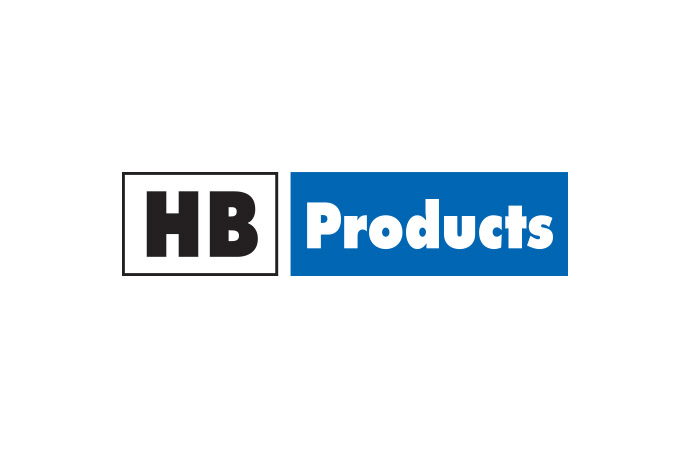In this first part, Mr. Rosenbusch of the Global Cold Chain Alliance and Mr. Badger of the International Institute of Ammonia Refrigeration, speak about the role of ammonia in industrial refrigeration, the importance of best practice examples and refrigerant training, and regulatory trends.

ammonia21: In your current position, you serve as Vice President of the International Association of Refrigerated Warehouses, the World Food Logistics Organization, the International Refrigerated Transportation Association, and the International Association for Cold Storage Construction.
How does GCCA incorporate the refrigeration interests of these different sectors with regard to the different temperature-controlled logistical needs?
Corey Rosenbusch: GCCA has a refrigeration and energy committee, operating as a joint committee, of all organisations under the global cold chain alliance, including our strategic partner, the International Institute of Ammonia Refrigeration. Given that refrigeration is the second largest operational expense, some of the focus points are on trends and efficiencies.
Temperature management is our core competency and it’s the focus of much of our work with our members. The committee also serves an educational purpose through the development of technical manuals, as well as guidelines and best practices.
ammonia21: Part of the responsibilities for GCCA involve policy development and implementation? Does GCCA promote any specific refrigerant policies? What is GCCA’s stance on natural refrigerants and ammonia? Same question to IIAR.
Rosenbusch: Our members represent companies that globally control 95% of the refrigerated food storage worldwide. Approximately 80-90% of our members use ammonia for their refrigeration systems, and being a natural refrigerant, it is something that GCCA, as an organisation, values; and, of course, it is a very efficient refrigerant for our membership.
Bruce Badger: As a strategic partner in the Global Cold Chain Alliance, the IIAR provides support for the other alliance partners in the area of refrigeration technology. While we do not speak for the other alliance partners or create policies for them, we do provide recommendations and technical support.
IIAR is dedicated to the use of natural refrigerants, with a particular emphasis on ammonia since it is the most efficient refrigerant and the most widely used for industrial applications. Education and advocacy are the cornerstone elements for all IIAR programmes. We have developed training materials, bulletins, guidelines and standards for the design, installation and use of ammonia refrigerating systems. The IIAR is an American National Standards Institute approved standards development organisation.
ammonia21: Has GCCA spearheaded any policy initiatives pertaining to refrigerants? If so, which policies and what was the outcome? Same question to IIAR.
Rosenbusch: I can’t comment on specific policies, but a lot of the work is done on the regulatory side as opposed to the legislative side. When we look at regulation related to safe use of ammonia refrigeration systems, we try to give confidence to regulators and government bodies that we have the best practices, the standards and the operational expertise in place to use it in a safe manner. Safety is something we do focus a lot on, in the US, specifically, with the Occupational Safety and Health Administration (OSHA), to give regulators confidence in ammonia as a safe and reliable refrigerant.
Badger: The IIAR has taken a leading role in the GCCA Alliance with the US Occupational Safety and Health Administration (OSHA). We also cooperate with the US Environmental Protection Agency (EPA) GreenChill and E3 programs.
ammonia21: The World Food Logistics Organization (WFLO) offers a variety of educational programmes, including an annual training institute serving refrigerated warehouse professionals. As part of the four-day training program for refrigerants, participants toured Lanier Technical College's ammonia refrigeration facility, giving them an insight into using ammonia as a coolant.
How important is it for industry to gain an insight in using ammonia as a coolant? How does the International Institute for Ammonia Refrigeration (IIAR), which is one of your Strategic Partners, fit in the picture?
Rosenbusch: It is very important for industry to have insight into using ammonia, and we have specific refrigeration topics that are covered at the institute. Lanier Technical College is one of our partners, and the majority of participants at this training come from an operational background, and lack exposure to and knowledge of refrigeration systems. We like to give them exposure to the refrigeration system because how they operate their facility has a big impact on how efficiently the refrigeration system itself operates. A large part of the training focuses on increasing participants’ knowledge of ammonia as a refrigerant, increasing awareness and safety.
IIAR is a very valuable strategic partner and a resource for our membership, the end user. IIAR provides information on standards, codes and proper use as well as all technical aspects for refrigeration. We do have a shared governmental affairs office, so there is collaboration with our staff on governmental regulation affairs and policy.
ammonia21: You have said before that, “With today's emphasis on food safety, training plays a major role." What training areas would you say are in great need regarding a refrigerant such as ammonia, which has particular handling and use needs? Same question to IIAR.
Rosenbusch: GCCA is really focused on safety from three standpoints: worker safety – focusing on handling and general knowledge; the structural integrity of the facilities being operated –looking at proper construction of the facilities and maintenance of the system; and, finally, the refrigerant, which is the most heavily regulated of the three.
Badger: The safety record for facilities using ammonia refrigeration systems has been excellent. While immediate emergency response to any ammonia release is mandated in the US, by federal regulation, the injury rate from ammonia releases is quite low. However, even one injury is too many and we believe it is imperative to maintain a constant emphasis on high quality and efficient system design, employing highly trained system operators and incident response personnel.
ammonia21: 2011 is a new year. Any specific goals for GCCA?
Rosenbusch: We like to look at safety from a holistic perspective, understanding that in an industry, that means building a culture of safety starting from management down. To facilitate this goal we are launching a safety initiative this year, which will be a multiple year programme. We plan to measure the success of the programme by identifying key benchmarks for the industry. The kickoff for that will be at our annual convention in April, and that is where we will roll-out, more specifically, what some of the elements and our benchmarking will be.
How does GCCA incorporate the refrigeration interests of these different sectors with regard to the different temperature-controlled logistical needs?
Corey Rosenbusch: GCCA has a refrigeration and energy committee, operating as a joint committee, of all organisations under the global cold chain alliance, including our strategic partner, the International Institute of Ammonia Refrigeration. Given that refrigeration is the second largest operational expense, some of the focus points are on trends and efficiencies.
Temperature management is our core competency and it’s the focus of much of our work with our members. The committee also serves an educational purpose through the development of technical manuals, as well as guidelines and best practices.
ammonia21: Part of the responsibilities for GCCA involve policy development and implementation? Does GCCA promote any specific refrigerant policies? What is GCCA’s stance on natural refrigerants and ammonia? Same question to IIAR.
Rosenbusch: Our members represent companies that globally control 95% of the refrigerated food storage worldwide. Approximately 80-90% of our members use ammonia for their refrigeration systems, and being a natural refrigerant, it is something that GCCA, as an organisation, values; and, of course, it is a very efficient refrigerant for our membership.
Bruce Badger: As a strategic partner in the Global Cold Chain Alliance, the IIAR provides support for the other alliance partners in the area of refrigeration technology. While we do not speak for the other alliance partners or create policies for them, we do provide recommendations and technical support.
IIAR is dedicated to the use of natural refrigerants, with a particular emphasis on ammonia since it is the most efficient refrigerant and the most widely used for industrial applications. Education and advocacy are the cornerstone elements for all IIAR programmes. We have developed training materials, bulletins, guidelines and standards for the design, installation and use of ammonia refrigerating systems. The IIAR is an American National Standards Institute approved standards development organisation.
ammonia21: Has GCCA spearheaded any policy initiatives pertaining to refrigerants? If so, which policies and what was the outcome? Same question to IIAR.
Rosenbusch: I can’t comment on specific policies, but a lot of the work is done on the regulatory side as opposed to the legislative side. When we look at regulation related to safe use of ammonia refrigeration systems, we try to give confidence to regulators and government bodies that we have the best practices, the standards and the operational expertise in place to use it in a safe manner. Safety is something we do focus a lot on, in the US, specifically, with the Occupational Safety and Health Administration (OSHA), to give regulators confidence in ammonia as a safe and reliable refrigerant.
Badger: The IIAR has taken a leading role in the GCCA Alliance with the US Occupational Safety and Health Administration (OSHA). We also cooperate with the US Environmental Protection Agency (EPA) GreenChill and E3 programs.
ammonia21: The World Food Logistics Organization (WFLO) offers a variety of educational programmes, including an annual training institute serving refrigerated warehouse professionals. As part of the four-day training program for refrigerants, participants toured Lanier Technical College's ammonia refrigeration facility, giving them an insight into using ammonia as a coolant.
How important is it for industry to gain an insight in using ammonia as a coolant? How does the International Institute for Ammonia Refrigeration (IIAR), which is one of your Strategic Partners, fit in the picture?
Rosenbusch: It is very important for industry to have insight into using ammonia, and we have specific refrigeration topics that are covered at the institute. Lanier Technical College is one of our partners, and the majority of participants at this training come from an operational background, and lack exposure to and knowledge of refrigeration systems. We like to give them exposure to the refrigeration system because how they operate their facility has a big impact on how efficiently the refrigeration system itself operates. A large part of the training focuses on increasing participants’ knowledge of ammonia as a refrigerant, increasing awareness and safety.
IIAR is a very valuable strategic partner and a resource for our membership, the end user. IIAR provides information on standards, codes and proper use as well as all technical aspects for refrigeration. We do have a shared governmental affairs office, so there is collaboration with our staff on governmental regulation affairs and policy.
ammonia21: You have said before that, “With today's emphasis on food safety, training plays a major role." What training areas would you say are in great need regarding a refrigerant such as ammonia, which has particular handling and use needs? Same question to IIAR.
Rosenbusch: GCCA is really focused on safety from three standpoints: worker safety – focusing on handling and general knowledge; the structural integrity of the facilities being operated –looking at proper construction of the facilities and maintenance of the system; and, finally, the refrigerant, which is the most heavily regulated of the three.
Badger: The safety record for facilities using ammonia refrigeration systems has been excellent. While immediate emergency response to any ammonia release is mandated in the US, by federal regulation, the injury rate from ammonia releases is quite low. However, even one injury is too many and we believe it is imperative to maintain a constant emphasis on high quality and efficient system design, employing highly trained system operators and incident response personnel.
ammonia21: 2011 is a new year. Any specific goals for GCCA?
Rosenbusch: We like to look at safety from a holistic perspective, understanding that in an industry, that means building a culture of safety starting from management down. To facilitate this goal we are launching a safety initiative this year, which will be a multiple year programme. We plan to measure the success of the programme by identifying key benchmarks for the industry. The kickoff for that will be at our annual convention in April, and that is where we will roll-out, more specifically, what some of the elements and our benchmarking will be.
MORE INFORMATION
Related stories















_1522327086.png)




